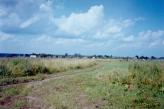|
|
Articles
/
Drainage network
Drainage networkThe rivers and lakes are places or recreation for residents of St. Petersburg and the Leningrad Oblast. Located on the banks of reservoirs are numerous tourist centers; sporting events related to water sports are arranged also (such as “Vuoksa” water tourist festival in Losevo.) Authors
Chistyakov, Anton Yuryevich
Geography
Topographical landmarks/Baltic Sea, the
Topographical landmarks/Bolshaya Pyal'itsa River, the Topographical landmarks/Chagoda River, the Topographical landmarks/Duderhof Heights, the Topographical landmarks/Duderhof Springs Topographical landmarks/Gostilitsi Springs Topographical landmarks/Gugoya Spring Topographical landmarks/Ivinskoye Reservoir, the Topographical landmarks/Izhora Hills, the Topographical landmarks/Karelian Isthmus, the Topographical landmarks/Khrevitsi Springs Leningrad Oblast, the/Kirishi District Topographical landmarks/Kolp River, the Topographical landmarks/Ladoga Canals, the Topographical landmarks/Ladoga Lake Topographical landmarks/Lar'yanskoye Marsh Topographical landmarks/Lid River, the Leningrad Oblast, the/Lomonosov District/Lopukhinka Village Leningrad Oblast, the/Priozersk District/Losevo Settlement, Railway Station Leningrad Oblast, the/Tikhvin District/Lukino Village Topographical landmarks/Mga River, the Leningrad Oblast, the/Kirovsk District/Mga Urban Settlement Topographical landmarks/Narova River, the Topographical landmarks/Narva Reservoir, the Topographical landmarks/Neva River, the Topographical landmarks/Onega Lake Topographical landmarks/Pasha River, the Leningrad Oblast, the/Boksitogorsk District/Podborovye Settlement Topographical landmarks/Pudost Springs Topographical landmarks/Ragusha River, the Topographical landmarks/Ropsha Springs Topographical landmarks/Sablinka River, the Topographical landmarks/Sestra River, the Topographical landmarks/Sinyavinskoye Marsh Topographical landmarks/Slavyanka River, the Topographical landmarks/Slavyanka River, the Topographical landmarks/Svir River, the Topographical landmarks/Syas canals, the Topographical landmarks/Syas River, the Topographical landmarks/Taytsi Springs Topographical landmarks/Tigoda River, the Topographical landmarks/Tikhvin Ridge, the Topographical landmarks/Tikhvinka River, the Topographical landmarks/Tosna River, the Topographical landmarks/Valdai Hills, the Topographical landmarks/Valdai Ledge Topographical landmarks/Veps Hills, the Topographical landmarks/Verestinsky Mokh Marsh (Verestino Moss Marsh) Leningrad Oblast, the/Volkhov District Topographical landmarks/Volkhov River, the Topographical landmarks/Volozhba River, the Topographical landmarks/Vuoksa River, the Leningrad Oblast, the/Vyborg District/Vyborg Town Bibliography
Евгеньев Г. По рекам и озерам Ленинградской области. Л.: Лениздат, 1962.
Ильина Л.Л., Грахов А.Н. Бесценное богатство: Рассказ о реках и озерах Ленинградской области Л.: Гидрометеоиздат, 1978. 144 с.: ил. Исаченко Г. А. «Окно в Европу»: История и ландшафты. СПб., 1998, С. 255-311 Кириллова В.А., Распопов И.М. Озера Ленинградской области Л.: Лениздат, 1971. 152 с.: ил., С. 255-311 Subject Index
Ladoga Canals, the
Syas Canals , the Tikhvin Canal System Volgo-Baltic Waterway, the White Sea-Baltic Sea Waterway, the Mentioned in articles:
|
|







